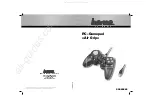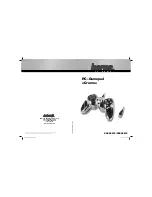
6
8. Mounting
8.1 Actuator Check
-
Is the actuator filled with the appropriate oil type?
-
Is enough oil in the actuator?
-
Did you fasten the separately delivered vent screw in the highest bore (depending
on the mounting orientation)?
8.2 Mounting Orientation
See table 2 for permissible mounting orientations. To facilitate mounting and mainte-
nance, however, it is recommended to use orientation IMB 3.
8.3 Mounting Instructions
-
Make sure that the actuator is accessible from all sides to ensure convenient hand-
wheel operation, electrical connection, and replacement of assemblies.
-
Avoid direct exposure to rain, snow and other environmental influences. Select the
mounting site accordingly.
-
Exclusively mount the actuator on a rigid, non-vibrating support to avoid relative
motion between the actuator and the valve.
-
When mounting the actuator close to heat sources use an insulating layer or shield-
ing.
8.4 Mounting the Actuator to the Valve
8.4.1 Preparing the Equipment
-
Make sure that the shaft and lever bore surface are clean and free of grease.
-
Determine the length of the stay tube (not included in the scope of delivery).
-
Move the valve to the “CLOSED“ position.
-
Drive the actuator close to the corresponding end position. Use the handwheel for
the last few mm. Observe the permissible angle.
-
Spacing “L” minus 300 mm gives the required length of the link tube.
-
Drill a cone bore into the valve lever for mounting the second ball-and-socket joint,
as seen in Figure 4.
-
Insert the ball-and-socket joint, secure with crown nut and split-pin.
-
Remove the welding bushings and weld them to the stay tube (C 15 to DIN 17210)
-
Insert the link rod between the two ball-and-socket joints and screw it in.
-
If required adjust “L” by turning the link rod.
-
When all adjustment steps are finished, fasten the counter nuts.
8.4.2 Adjusting the Stops in Dependence of the Travel
-
Move the output lever / valve to the position requiring fine adjustment.
-
Put the stop onto the toothing as close to the output lever as possible and fasten
with screws.
-
Move the output lever towards the stop using the handwheel; turn the coupling rod
for fine adjustment.
-
Fasten the counter nuts.
-
Fasten the stop in the other mounting orientation close to the end position, depend-
ing on the toothing.
8.4.3 Adjusting the Stops in Dependence of the Torque
-
First proceed as described in section 8.4.2.
-
Prior to re-fastening the counter nuts lock the handwheel and turn the counter nut
until a pretension occurs in the valve’s closed position.
-
Fasten the counter nuts



































